Early morning wakeup call! We were chomping at the bit for our road trip to Viñales. The four of us walked to Mimita’s home where we were once again greeted with café.
Today Mimita would stay home to care for her mother and Luis would drive and accompany us on our first road trip in Cuba.
Viñales is a small municipality in Pinar del Río Province of Cuba, west of Havana. It is an agricultural area where crops of fruits, vegetables, coffee, and tobacco are grown via traditional methods. The town is lined with mostly one-story houses with front porches.
The municipality is dominated by low mountain ranges of the Cordillera de Guaniguanico where typical outcrops known as mogotes (isolated steep-sided hills composed of limestone or marble) complete the landscape. These hills have a rounded, tower-like form.
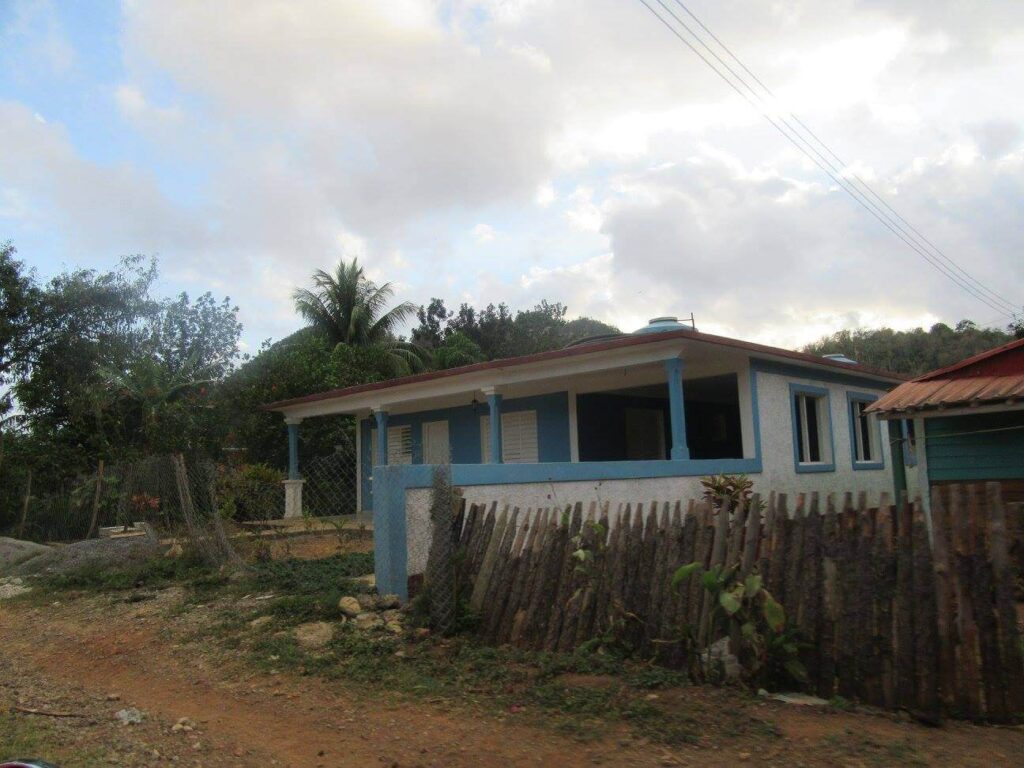
Left: typical house in Viñales, colonial architecture, one-story wooden house with a porch
Right: although these mogotes look like a mountain climber’s paradise, it is illegal to climb them
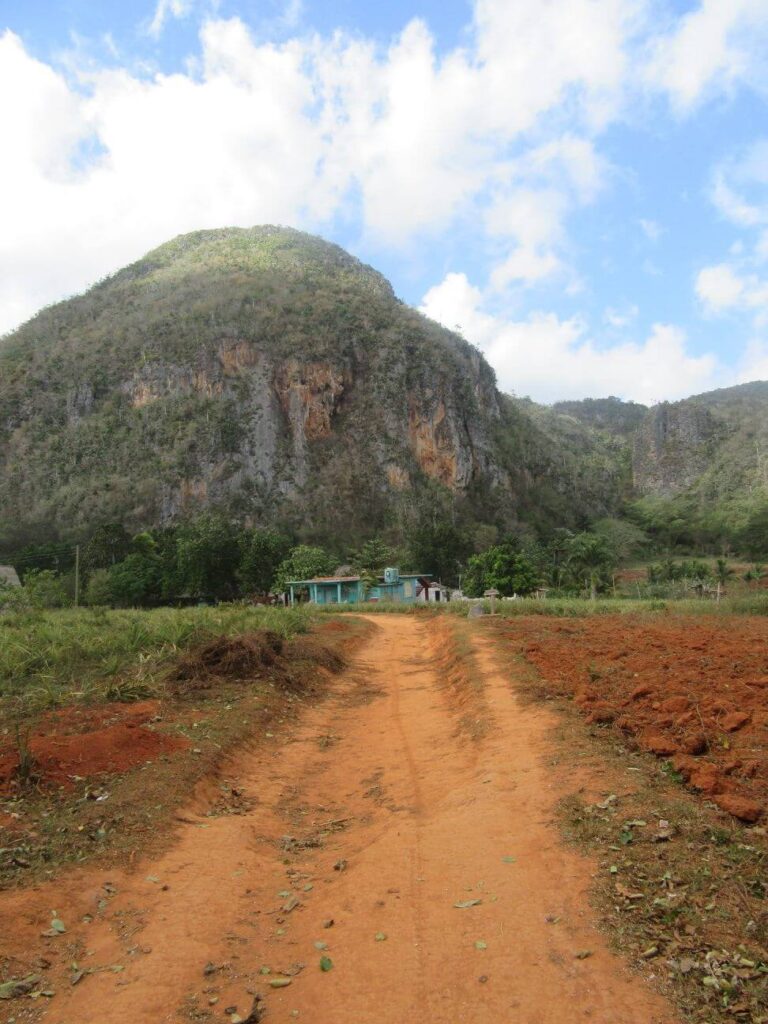
We bid our good-byes to Mimita and Tía Nena and boarded our transportation, a vibrant orange 1955 Chevy Bel-Air. The car sported a refurbished Mercedes engine and a remote state of the art security system, but no seat belts. With all windows manually rolled down, off we went…Luis, la Mochila, and myself in the front seat with my girls and friend in the spacious backseat.
After exiting Havana we merged onto el Autopista de Pinar de Río (freeway). Now, I use the term freeway liberally! The six lane freeway separated by a bush median is empty by United States standards, a few trucks, buses, quite a few horse and carriages, an occasional bicycle, and hitchhikers share the roadway.

Left: autopista, the highway was dilapidated causing posted speeds impossible to achieve
Right: 1955 Chevy Bel Air, our chariot during our trip

Our road trip took us three hours to travel 110 miles or 178 kilometers…the maximum speed on el Autopista is 62 mph or 100 kph. Our trip averaged 37 mph. Yes, the roads were horrible and we did stop at a “rest stop” along the way but the crux of our slow journey was the checkpoints along the freeway.
The checkpoints are clearly marked with overhangs and signs to slow down. At the second check point la polícia signaled for Luis to pull over for questioning. Luis immediately pulled over, turned off the engine, jumped out of the car, and proceeded to answer questions.
By now, we were almost seasoned experts. I was nervous but not alarmed and my backseat ducklings were perfectly abiding by rule #2 of our travel agreement, “do not look or speak to la polícia unless you are addressed” We were allowed to continue…sigh of relief.
Afterwards, along the Autopista Luis pointed out crops. First there were the rice fields, some sowed and some ready for harvest. Then there were the yuca plants, long and leggie, followed by the banana crops producing a smaller sweet fruit. Enormous mango trees with low hanging fruit were sprinkled throughout the landscape. Then rows and rows of sugarcane occupied the fields.
Although not a crop, but still lining the Autopista, were locals and polícia pidiendo botellas (hitchhiking). We would dash by them, some holding out money while others were empty-handed and relying on their looks.
Halfway through our journey we pulled over to a rest stop littered with dogs, chickens, and roosters. Luis had been talking up some rest area ham sandwiches the entire ride. He was right…we devoured our fresh salty ham on a soft roll served right out of a cardboard box.
Back on el Autopista, we passed locals on the shoulder selling blocks of queso (cheese), guava paste, and roasted chickens skewered on some makeshift metal apparatus.

Left: rest stop with dogs and livestock roaming free
Right: a sandwich man at the rest stop
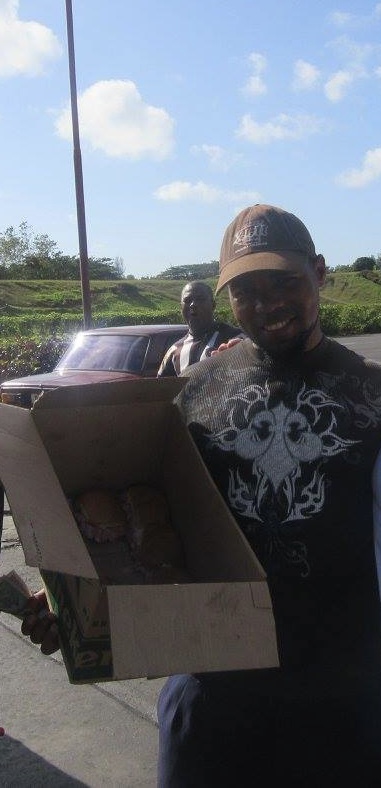
We exited the freeway and merged onto steep, winding, and treacherous roads. Gravel filled spots where the road had sunk.
We arrived at Finca Raúl Reyes, a tobacco plantation, to sample fresh juices and take a rest on a hammock. We tried the pineapple juice, a virgin piña colada, mamey juice, and the local beer. We explored the baby tobacco plants and secadoras (drying houses). Then we hiked back down the dusty trail to meet José, our guide for a horseback ride to the mogotes.
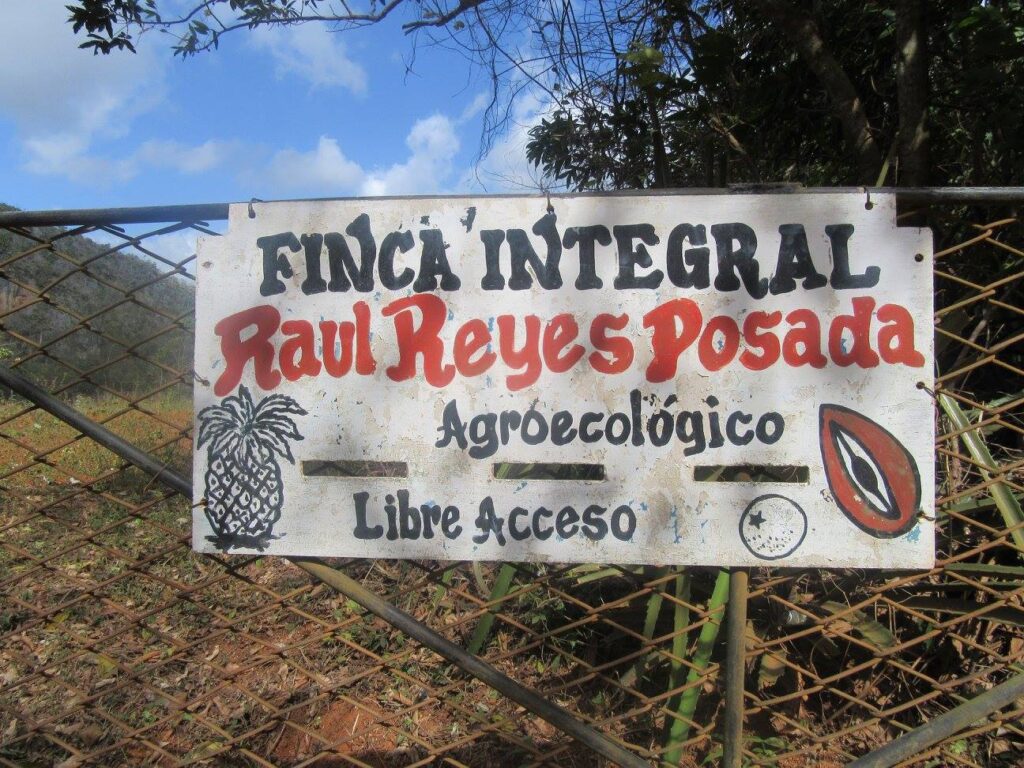
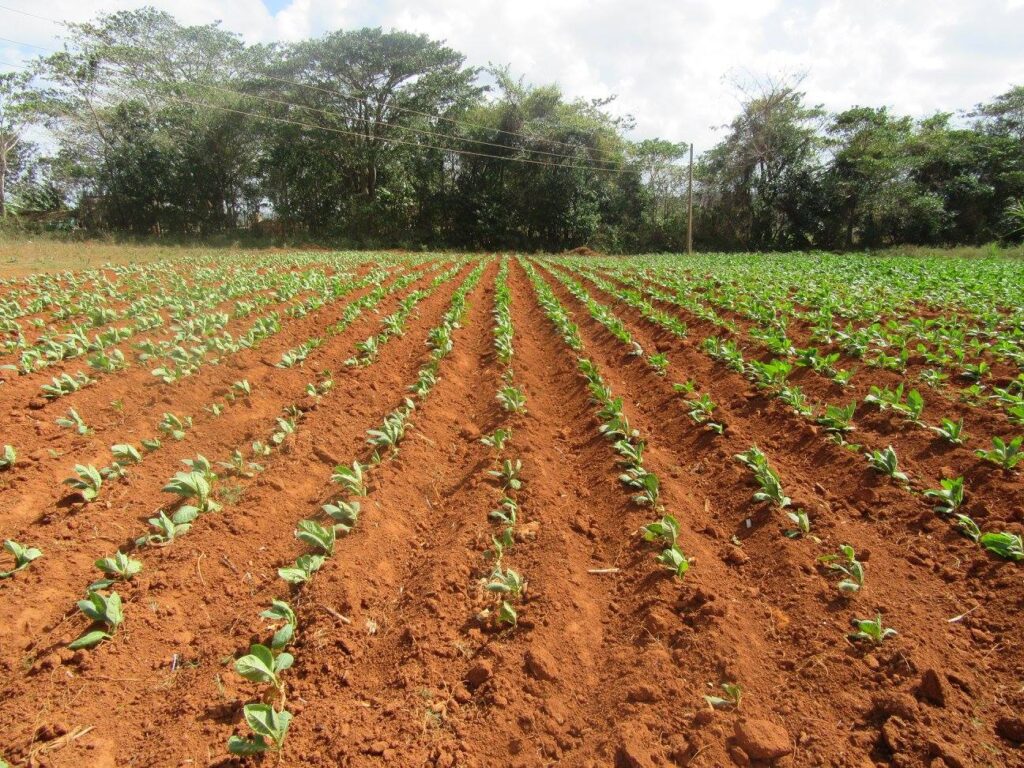

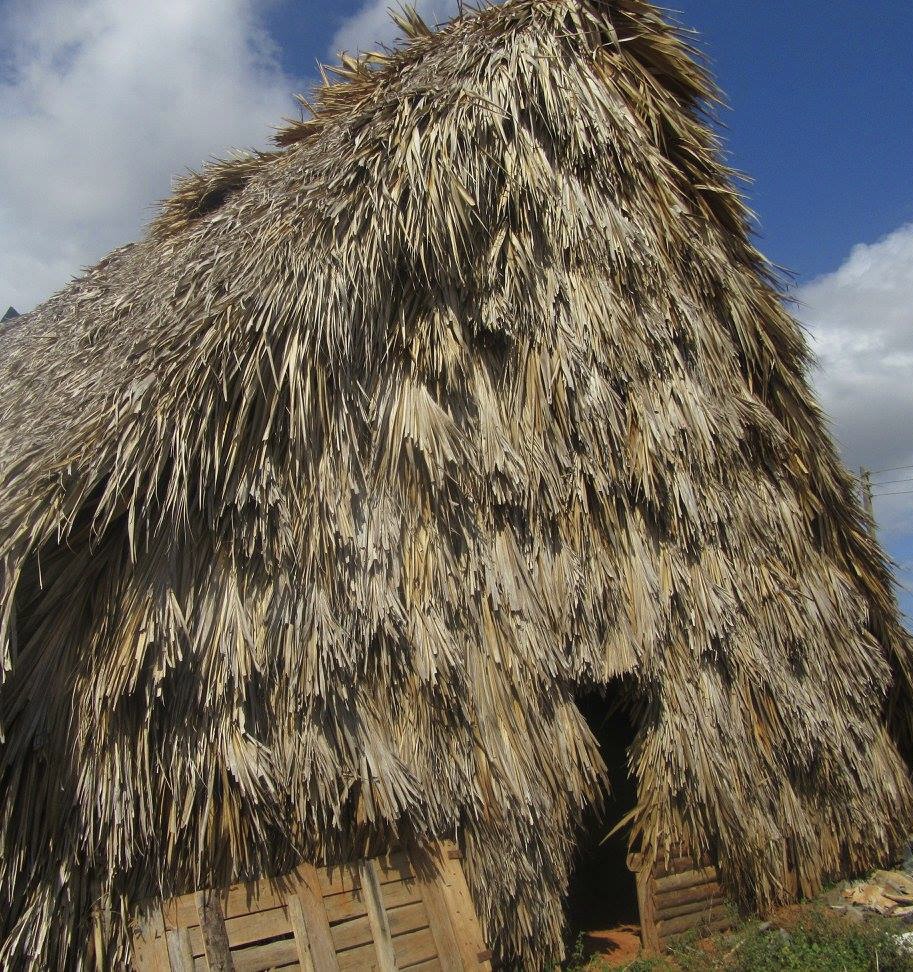
Luis knew of a spot up the road where we could dine al fresco. La Pimienta Paladar is located right across the street from la Cueva del Indio (Indian Cave).
We sat at a long table with a green tablecloth and ordered some refreshments, chicaritas, a whole pargo frito (fried red snapper), ropa vieja, camarones enchilado (creole shrimp), masas de puerco frita (fried pork nuggets), and pollo a la parilla (grilled chicken). The accompaniments were served family style with huge plates of arroz blanco (white rice), frijoles negros (black beans), moros y cristianos, tostones, and ensalada (salad). Luis ordered un cafesito and flan (custard). Bellies full once again.
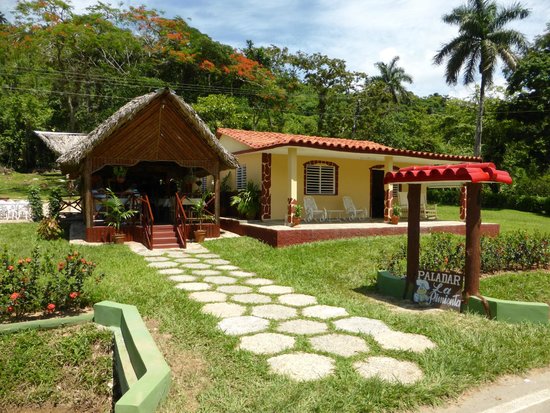
Left: La Pimienta Paladar
Right: the exit from la Cueva del Indio

We crossed the street and purchased our tickets for the boat ride through La Cueva del Indio. The cave was amazing, well worth the many steep stairs we had to ascend and descend to enter. After a breathtaking walk through the cave we took a short 10-minute boat ride through a small underground river and voila…we were back in fresh air! Time to travel back to Havana. We needed to get past the scary roads before nightfall.
We arrived exhausted to our casita. My girls showered while my friend and I went in search of a bottle of Havana Club 7. We only had to walk two blocks for the rum and another half block for agua con gas (club soda). We had purchased fresh squeezed orange juice the day before at our local mercado. We poured ourselves a toddy over ice, we brought ice trays with us, and sat on our balcony.
Our casita was beginning to feel like home. We recounted our adventures and then slipped into our beds ready for Day 4 adventures.
Until next time…
- izzy

For 50 years I eagerly listened to stories about Cuba from my parents, family, family friends, and even strangers. With the passing of my Papi and my Mami I began to long for the connection we shared with our birth-land. After months of planning, myself along with my two daughters and a close friend traveled approximately 93 miles south of Key West to the Pearl of the Antilles.
We arrived to Cuba as a party of four…but we felt like a party of five as we carried a backpack with us always. The backpack became known as la Mochila and Mimita affectionately nicknamed it “la 70 kilo mochila”. Each morning I packed la Mochila for the day ahead.
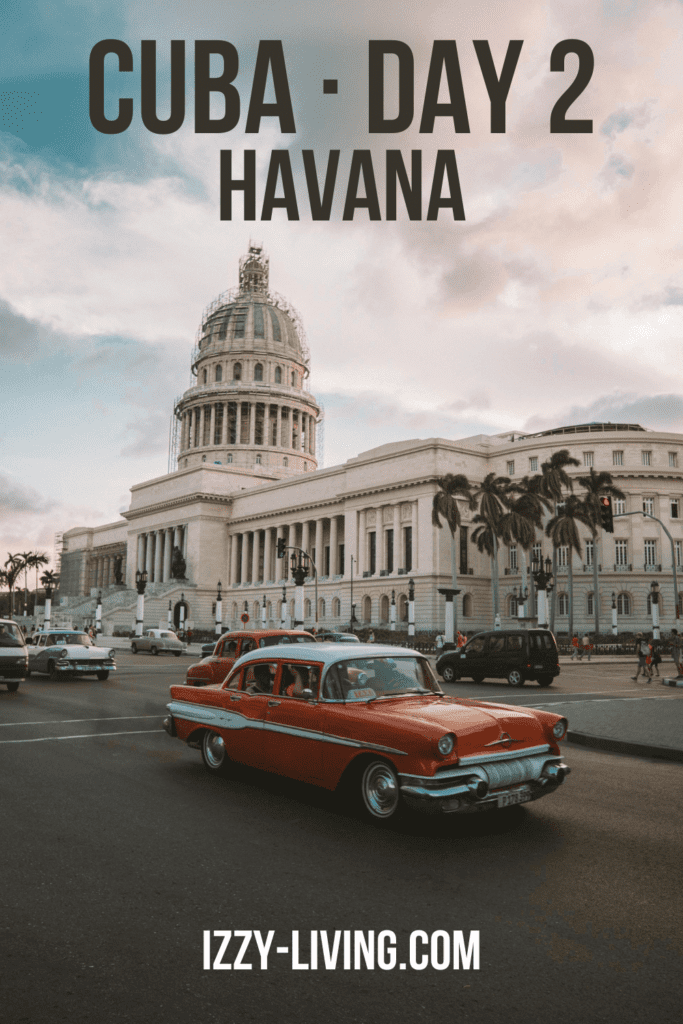
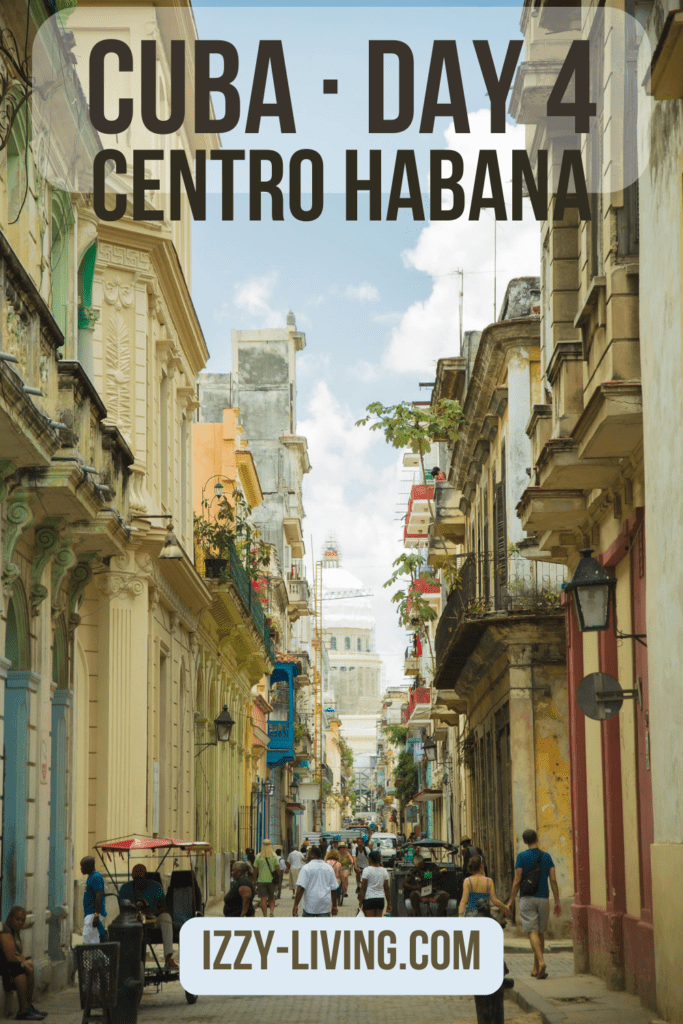
I awoke in my bed to the familiar humming of my room air-conditioner. What time is it? There was not a clock in my room and our cell phones slept in la Mochila. Who else is awake? What are we going to do with our day? It was a leisurely morning for all of us. Because of our limited Wi-Fi access, weather was determined by opening the wood shuttered doors to our balcony. The day was a overcast. It felt right, like a comforting blanket, we were assimilating to Cuba.

